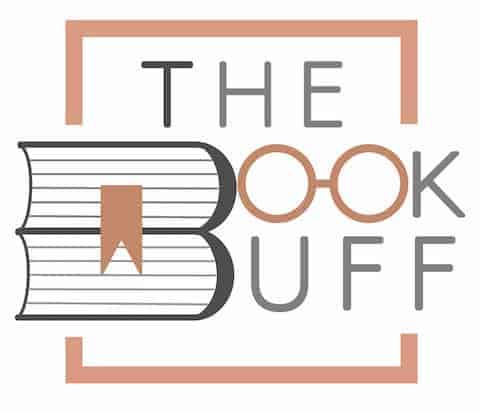Does Speed Reading Really Work? [Here’s the Truth!]
Disclosure: This post may contain affiliate links. – meaning I may get a commission if you decide to purchase through my links, at no additional cost to you.
If you are considering it to enroll for a course in speed reading or to purchase an app to help you to read faster, you might be wondering whether speed reading really works.
Generally speaking, speed reading can help you improve your reading speed. However, you need to practice speed reading techniques regularly in order to maintain comprehension levels such that you actually understand what you are reading.
If your goal is to merely increase the number of words you read, the speed reading technique definitely works. But, there are a few things that you should be aware of before you jump to a conclusion!
So, in this article, we will take a look at the concept of speed reading, understand what speeds can be achieved through speed reading, discover some drawbacks that you should be aware of, and much more!
So, let’s get started!
Pro Tip! If you want to improve your reading speed, I’d highly recommend you to check out this speed reading course. It is perfectly suited for beginners! It is very affordable and comes with a 60-day full money-back guarantee! So, you have nothing to lose!
What is Speed Reading?

There are different definitions for speed reading but in principle, they all refer to the process where instead of identifying individual words, the reader rather rapidly recognizes and absorbs phrases or sentences on a page all at once.
This is done with specific speed reading techniques that allow the reader to read faster and thus absorb more information in a shorter time.
To understand the concept of speed reading in further detail, check out my other article on Speed Reading!
From this, it is clear that speed reading techniques not only include ways to read more words per minute but also include methods to read only the essential words and sections.
Speed reading techniques are often taught to children at a young age already but an adult who needs to absorb written information faster can at any time learn the techniques as well.
The ability to absorb information fast and recall it later is important to many adults, whether it is a student who has to prepare for an examination, a professional who has to stay abreast of trends, or a business person leading a team.
The faster you can read, the more information you absorb, and the better decisions you can make.
How Fast Can Speed Readers Read?
To find out how fast speed readers can read we first have to determine how fast a person must read to be considered a speed reader. And secondly, we have to look at the comprehension rate when someone is speed-reading.
Good and Exceptional Speed Readers
There is consensus amongst researchers that if a person can read 400 words or more per minute the reader can be classified as a speed reader.
Generally, it is said that you are a “good” speed reader when you average between 400 and 600 words per minute. Exceptional speed readers can read up to 1,000 words per minute and still comprehend a large percentage of the content.
Comprehension and Mechanical Speed Reading
As the purpose of speed reading is to absorb as much written information as possible in the shortest possible time to recall the information at a later stage, it is of no use to speed read so fast that you can’t remember anything.
People reading more than 1,000 words per minute generally only read mechanically, meaning their comprehension of the content and the retention of the text are normally very low.
World’s Fastest Reader
Howard Stephen Berg is recognized as the world’s fastest reader. It has been acknowledged in the 1990 Guinness Book of World Records that he can read more than 25,000 words a minute.
Does Speed Reading Actually Work?
Although many people have increased their reading speed by using speed reading techniques, there are not many claiming speeds over 1,000 words per minute.
It seems as if a word rate between 400 and 1,000 can be reached with speed reading techniques and is sufficient to help most people to read rapidly through documents and books to absorb great quantities of written information in a limited time.
But there are also people, like Elizabeth Schotter, a cognitive scientist at the University of South Florida, who has published an article stating that you can’t improve your reading speed without the loss of comprehension to such an extent that it is not worthwhile to read faster.
Disadvantages of Speed Reading

Like most things, speed reading also has some disadvantages.
1. You May Sacrifice Accuracy and Understanding
While speed reading is efficient in terms of how much time you spend reading, you might sacrifice comprehension for speed.
When reading something really complicated, speed reading can make it difficult for you to understand the content. Remember, speed reading is a technique to use if you only need a general idea of what a text is about.
2. Loss of Joy When Reading
For many people speed reading is not to enjoy what they have to read, but only a tool to consume as much written information as possible in the shortest possible time.
But if you read as a hobby and enjoy reading a good book and want to experience the craft of writing just as much as the story itself, speed reading is not for you. Most of the nuances in a book are not picked up when speed-reading.
Fortunately, you can do both speed reading and “normal” reading. You can use your speed reading techniques when needed but also relax with a good book without worrying about the time it takes to read it.
3. It Can be Exhausting
Every time you speed-read a book or document it takes a lot of mental effort. You also have to continuously train yourself to speed read, and this can be very exhausting. You also have to focus intensely on the content and that can be tiring.
How Fast Should You Read on Average?
Most people read at an average rate of 250 to 300 words per minute (wpm), though some are naturally quicker than others. This number of words for a “normal” reading speed can also be calculated by using the information we have about the properties of eye movement and text.
When you read and you haven’t had any speed reading training, your eyes fixate on 7 to 8 letters in the text and then move on to the next fixation of 7 to 8 letters, and so forth.
Studies have shown that every fixation lasts around 200 to 250 milliseconds – that is 4 to 5 fixations per second or 240 to 300 fixations per minute. In most texts, the average word is 5 letters long (6, if you add a space after each word).
If we do the following calculation we can determine a “normal” reading speed:
- 240 fixations x 7 letters per fixation = 1,680 letters per minute
- 1,680 letters / 6 letters per word = 280 words per minute
If you read less than 250 words per minute you are reading slower than the average adult reader.
You can read more about reading speed in a recently published article “Can You Improve Your Reading Speed? Here’s What to Know!”
How to Test Your Reading Speed?
There are multiple ways to check your reading speed.
1. Manually
One way to check your reading speed is to calculate it manually. Use your mobile’s timer to determine how many seconds it takes to read one page of a book. Then count the words on the page and take that as the average number of words per page.
Then you only have to divide the number of words by the seconds it has taken to read the page, and divide it by 60 again to convert the seconds to minutes.
2. Online
You can also use a must easier way of testing and determining your reading speed by using online software.
By using one of the many free online reading speed test software programs you can determine your reading speed and your comprehension rate within minutes. Most of these software offer options to make it possible to test your reading speed with different types of texts, styles, and topics.
3. Apps
There are also apps available that help you to read faster and some of them also offer a function to determine your reading speed.
The Reading Trainer app has the unique feature that it starts by testing your current reading speed and, importantly, checking how many words per minute can you read and still have good comprehension.
The app requires you to read a text and then answer a short multiple-question quiz. This is to determine how much information you can correctly retain.

About the Author
Akansha is a former business journalist and a seasoned communications professional. She is the founder of TheBookBuff, an avid storyteller, and a lifelong biblophile! Check out her profile page to know more about Akansha.

![Can You Gift a Kindle Book That You Own? [Here’s How!]](https://thebookbuff.com/wp-content/uploads/2021/11/thank-you-card-2021-09-02-06-05-17-utc-optimized-300x200.webp)
![Is Kindle Unlimited Worth It in 2023? [Complete Guide!]](https://thebookbuff.com/wp-content/uploads/2021/11/pexels-alisson-lucena-9268223-optimized-300x200.jpeg)
![Kindle vs. Books: Which is Better for Reading? [Full Guide!]](https://thebookbuff.com/wp-content/uploads/2021/11/pexels-perfecto-capucine-1329571-300x200.webp)
![Kindle Unlimited vs. Kindle? [Here’s the Difference!]](https://thebookbuff.com/wp-content/uploads/2021/11/Depositphotos_275763340_XL-optimized-300x200.webp)

